* * * *
I recently got a copy of A Sequel, “Rabbit Remembered.”
Which is another way of saying that Harry “Rabbit” Angstrom is dead. (Heck, I didn’t even know he was sick.) I first met Harry back in 1971, when I took a junior-college class in American literature. One of the books was Rabbit, Run, and it made a deep impression.
 More Rabbit novels followed – one at the end of each decade – and I read them all. (One benefit was seeing how others got through the 1960s, interpreted at right. Also the 1970s and 1980s.) Then came Rabbit Remembered, the novella by John Updike published in 2000. That novella marked an end of an era – five books on Rabbit Angstrom. (Wikipedia.)
More Rabbit novels followed – one at the end of each decade – and I read them all. (One benefit was seeing how others got through the 1960s, interpreted at right. Also the 1970s and 1980s.) Then came Rabbit Remembered, the novella by John Updike published in 2000. That novella marked an end of an era – five books on Rabbit Angstrom. (Wikipedia.)
(But see also Still Wild About Harry: “Another decade has come and gone and here[‘s] the latest installment in the [‘Rabbit’] saga.” The reviewer added that one hesitates to declare it the final installment, then gave a pithy synopsis of the whole series.)
The saga began in 1960 with Rabbit, Run, the only one of the five to be made a movie, as seen in the poster at the top of the page. (It’s also very hard to find a copy. See ‘Rabbit,’ lost.)
As noted, a new Rabbit novel came at the end of each new decade, and so each became a time capsule, based on the density of Updike‘s writing. (His attention to detail.) Just to review, a time capsule is a “historic cache of goods or information, usually intended as a method of communication with future people,” and here’s what one obit said:
The detail of his writing was so rich that it inspired two schools of thought on Mr. Updike’s fiction: those who responded to his descriptive prose as to a kind of poetry, a sensuous engagement with the world, and those who argued that it was more style than content
See John Updike, Lyrical Writer of the Middle-Class, Dies at 76. But in this case, those “future people” include us aging Baby-boomers, as we look back and wonder how the heck we survived relatively intact. (Considering all the garbage we went through.)
The original Rabbit Run showed “three months in the life of a 26-year-old former high school basketball player named Harry ‘Rabbit’ Angstrom, and his attempts to escape the constraints of his life.” (Wikipedia.) But then escaping constraint was pretty much what the ’60s were about. (The ’70s – at left – were a whole ‘nuther story…)
We’ll get back to that, but first consider what the same obit said of Updike (who died in 2009):
His best-known protagonist, Harry Rabbit Angstrom, first appears as a former high-school basketball star trapped in a loveless marriage and a sales job he hates. Through the four novels whose titles bear his nickname — “Rabbit, Run,” “Rabbit Redux,” “Rabbit Is Rich” and “Rabbit at Rest” — the author traces the funny, restless and questing life of this middle-American against the background of the last half-century’s major events.
Which is another way of saying that the Rabbit novels are a great way to remember the major events of our formative years, from 1960 to 1999 – and then on to a New Millennium.
Again, in Rabbit Run Harry is a 26-year-old has-been whose life peaked in high school. (He was a star basketball player and quintessential BMOC.) Then one day at age 26 – trying to escape the “constraints of life” – he leaves his pregnant wife and infant son Nelson. He first plans to drive south to Florida – where he eventually gets, in a sequel – but ends up bedding and moving in with Ruth Byers, a woman with a shady past. (He gets her pregnant, and their daughter Annabelle ends up finally meeting her brother in Rabbit Remembered.)
In the midst of all this drama, Harry’s wife Janice accidentally drowns their new baby daughter, Rebecca. Also, Harry puts the move on the Lucy Eccles, wife of the Episcopal priest trying to get him to “do the right thing.” (It would have been nice to find out how the Eccles’ turned out – after all those years – and especially Lucy, whose “rump” Harry found so pleasant to pat…)
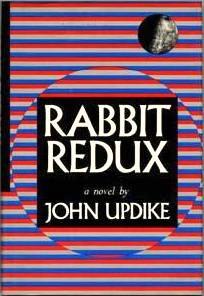 In Rabbit Redux, Harry gets a bit of comeuppance. While he couldn’t keep his hands off Janice in the first novel, here she’s the one at her sexual peak. It’s Harry who falls short in that department. So Janice runs off to live with her lover, Charlie Stavros. (Charlie later ends up as Harry’s only real friend – and fellow car-salesman at Springer Motors – in a sequel.)
In Rabbit Redux, Harry gets a bit of comeuppance. While he couldn’t keep his hands off Janice in the first novel, here she’s the one at her sexual peak. It’s Harry who falls short in that department. So Janice runs off to live with her lover, Charlie Stavros. (Charlie later ends up as Harry’s only real friend – and fellow car-salesman at Springer Motors – in a sequel.)
Then Harry gets finagled into having a runaway named Jill – and her black lover Skeeter – move in with him and Nelson. But all this is set against the rich back drop of the summer of 1969, and Neal Armstrong’s setting foot on the moon.
There’s more on that in Part II. Meanwhile, in Rabbit is Rich, “Harry has reached a paunchy middle-age without relocating from Brewer, Pennsylvania, the poor, fictional city of his birth.” (Actually, Reading, PA.) The book was published in 1981, on the cusp of the decade that led to the end of the Berlin Wall… And Rabbit is indeed rich, thanks to Janice. (She inherited her dad’s Toyota dealership.) But he’s also restless. He covets the young wife of his golfing partner, while the wife of his former high-school teammate – Ronnie Harrison – has the hots for him.
Incidentally, Ronnie and Janice end up married in Rabbit Remembered. Nelson is living with them too, in the old house Janice grew up in. That’s until Ronnie calls Annabelle – visiting for Thanksgiving – “the bastard child of a whore and a bum.” (Referring to Ruth and Harry. That dramatic turn of events leads to the novella’s denouement… Also incidentally, Ronnie too knew Ruth in the Biblical sense back in the original, Rabbit Run. (Which may explain his hostility.)
For the rest of the story, see On RABBIT – and “60 is the new 30″ – (Part II).
* * * *
The original post included an upper image of a movie poster, courtesy of movieposter.com/poster … Rabbit_Run.html. See also Rabbit, Run (film) – Wikipedia, and Rabbit, Run – Wikipedia. Note also ‘Rabbit,’ lost – Reading Eagle, which said “finding a copy of Reading’s most famous feature-length film is just as hard as obtaining an interview with the novel’s elusive author.”
But for some reason this “platform for publishing” sometimes substitutes an actual image with a block stating – for example “image may contain sky, outdoor, nature,” which does me no good and is quite aggravating. When that happens I usually delete the useless “info box,” and note – as here – what used to be there. Like my addendum to the first note-graf, “(And you might want to check Symbolic Rabbit Meanings…)” And for more on the platform, see WordPress.com – Wikipedia.
I continued with notes on the rating system for such movies – and posters:
Re: the rating system. See Motion Picture Association of America film rating system: “The ratings used from 1968 to 1970 were: Rated G: General audiences, Rated M: Mature audiences – parental guidance advised, Rated R: Restricted – admission limited to persons older than 16, unless accompanied by parent or adult guardian, and Rated X: No one younger than 16 admitted.” In 1970 the ages for “R” and “X” were raised from 16 to 17, but regardless, the system “has had a number of high-profile critics. Film critic Roger Ebert argued that the system places too much emphasis on sex, while allowing the portrayal of massive amounts of gruesome violence. The uneven emphasis on sex versus violence is echoed by other critics, including David Ansen, as well as many filmmakers…”
Other sources used in writing this post included John Updike Facts, information, pictures | Encyclopedia.com, The 100 best novels: No 88 – Rabbit Redux by John Updike, In Reading, Pa., Memories and Monuments of Updike, and Rabbit at Rest – The New York Times.
The 1960’s poster-image is courtesy of www.cecil.ebranch.info/blog/?tag=1960s-series. See also Americans Have Changed in a Big Way Since the 1960s, for a different spin on today’s theme…
The 1970s poster-image is courtesy of www.retrowaste.com.
The lower (1980’s Berlin-wall) image is courtesy of 1980s – Wikipedia, the free encyclopedia. The caption: “The fall of the Berlin Wall in 1989 marked the beginning of German reunification.”

 And finally came
And finally came  In the rush to make the Y2K celebration, Nelson drives recklessly through an intersection – the stoplights have all gone out – and faces death in the form of a “cocky brat in a baseball cap.” The cocky brat drives an SUV and goes out of turn at a four-way stop. Nelson – with decades of “wrongs, hurts, unjust deaths press[ing] behind his eyes” – faces death and comes out unscathed. (As Winston Churchill – seen at right – said, “
In the rush to make the Y2K celebration, Nelson drives recklessly through an intersection – the stoplights have all gone out – and faces death in the form of a “cocky brat in a baseball cap.” The cocky brat drives an SUV and goes out of turn at a four-way stop. Nelson – with decades of “wrongs, hurts, unjust deaths press[ing] behind his eyes” – faces death and comes out unscathed. (As Winston Churchill – seen at right – said, “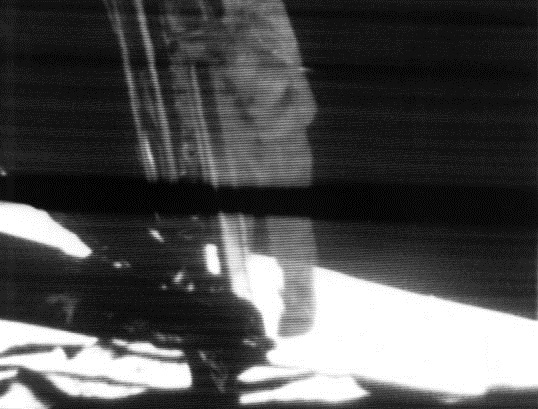 It’s the summer of 1969. Harry and his father Earl have gotten off work “from the little printing plant at four sharp.” They have a drink at a neighborhood bar, before taking separate buses home, in opposite directions. Earl asks his son to visit “some evening before the weekend.” (Mary Angstrom “has had Parkinson’s Disease for years now.”) Harry responds:
It’s the summer of 1969. Harry and his father Earl have gotten off work “from the little printing plant at four sharp.” They have a drink at a neighborhood bar, before taking separate buses home, in opposite directions. Earl asks his son to visit “some evening before the weekend.” (Mary Angstrom “has had Parkinson’s Disease for years now.”) Harry responds: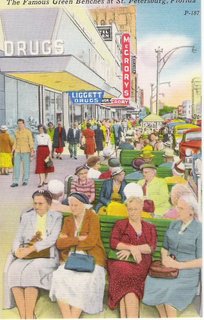 So notwithstanding the fact that Mary has
So notwithstanding the fact that Mary has  A good argument for “60 is the new 30…”
A good argument for “60 is the new 30…”
 But let’s get back to how I happened to be listening to Chris Matthews’ book-on-CD in the first place.
But let’s get back to how I happened to be listening to Chris Matthews’ book-on-CD in the first place.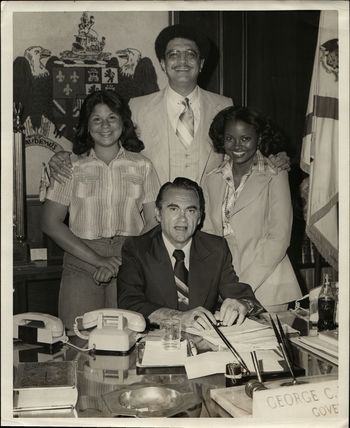 Take George Wallace… Please! Though he’s widely known as one of the most race-baiting politicians in American history, h
Take George Wallace… Please! Though he’s widely known as one of the most race-baiting politicians in American history, h Even though the two men were politic arch-enemies, Kennedy admired the fact that Reagan “knew how to manipulate symbols for his causes yet could sup with his enemies:”
Even though the two men were politic arch-enemies, Kennedy admired the fact that Reagan “knew how to manipulate symbols for his causes yet could sup with his enemies:”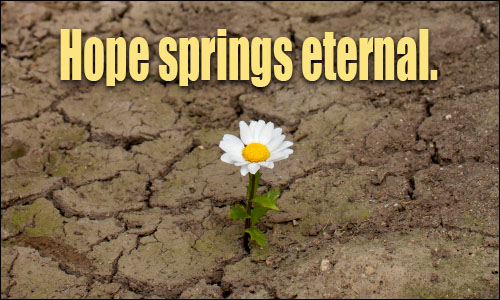
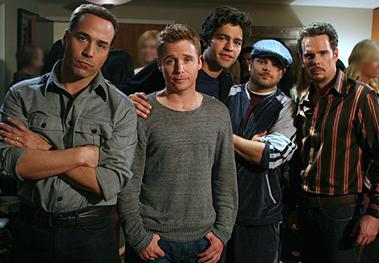
 Remember the old Alfred Hitchcock movies where he appeared in a
Remember the old Alfred Hitchcock movies where he appeared in a 